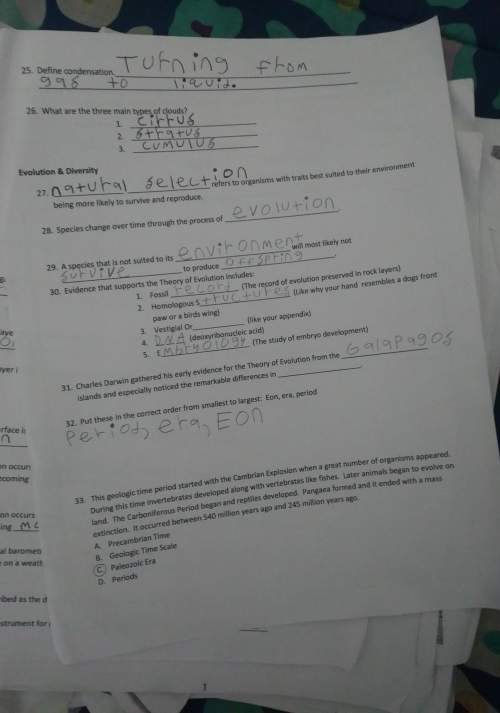
please help!! A ball is thrown upward. What is its time interval between the release of the ball and the time it reaches its maximum height? Its initial vertical speed is 10.8 m/s and the acceleration of gravity is 9.8 m/s^2. Neglect air resistance. Answer in units of s.

Answers: 3


Another question on Physics

Physics, 21.06.2019 23:30
You and a friend (alex) are at a a tree-top adventure park .. . part of the course requires you to climb up a rope. you both climb the same rope in the same amount of time. however, the tension in the rope is greater when alex climbs. who did the most work? alex did - more tension means more force - more force means more work was done you did - less tension means less force - less force means more work was done to find the work done, the force exerted and distance moved are multiplied. a couch is moved twice before you are happy with its placement. the same force was used to move the couch both times. if more work is done the first time it is moved, what do you know about the distance it was moved? when more work was done, the couch was moved less. when more work was done, the couch was moved further. when more work was done, the couch wasn't moved at all. when more work was done, the couch was moved the same distance.
Answers: 2

Physics, 22.06.2019 03:00
Arotating space station is said to create “artificial gravity”—a loosely-defined term used for an acceleration that would be crudely similar to gravity. the outer wall of the rotating space station would become a floor for the astronauts, and centripetal acceleration supplied by the floor would allow astronauts to exercise and maintain muscle and bone strength more naturally than in non-rotating space environments. if the space station is 200 m in diameter, what angular velocity would produce an “artificial gravity” of 9.80 m/s^{2} 2 at the rim?
Answers: 3

Physics, 22.06.2019 14:40
During the experiment if you could triple the breakaway magnetic force with all other quantities left unchanged, what is the new value for the critical velocity if it was v0 (initial velocity), initially? (b) now if you halved the radius with all other quantities left unchanged, what is the new critical velocity if it was v0 (initial velocity), initially? (c) if during the experiment, critical velocity quadrupled with all other quantities left unchanged, what is the new breakaway force if its magnitude was initially f0,?
Answers: 1

You know the right answer?
please help!! A ball is thrown upward. What is its time interval between the release of the ball and...
Questions



Mathematics, 16.04.2021 05:00


English, 16.04.2021 05:00

Mathematics, 16.04.2021 05:00





Biology, 16.04.2021 05:00


Mathematics, 16.04.2021 05:00



Mathematics, 16.04.2021 05:00



Mathematics, 16.04.2021 05:00

Mathematics, 16.04.2021 05:00




